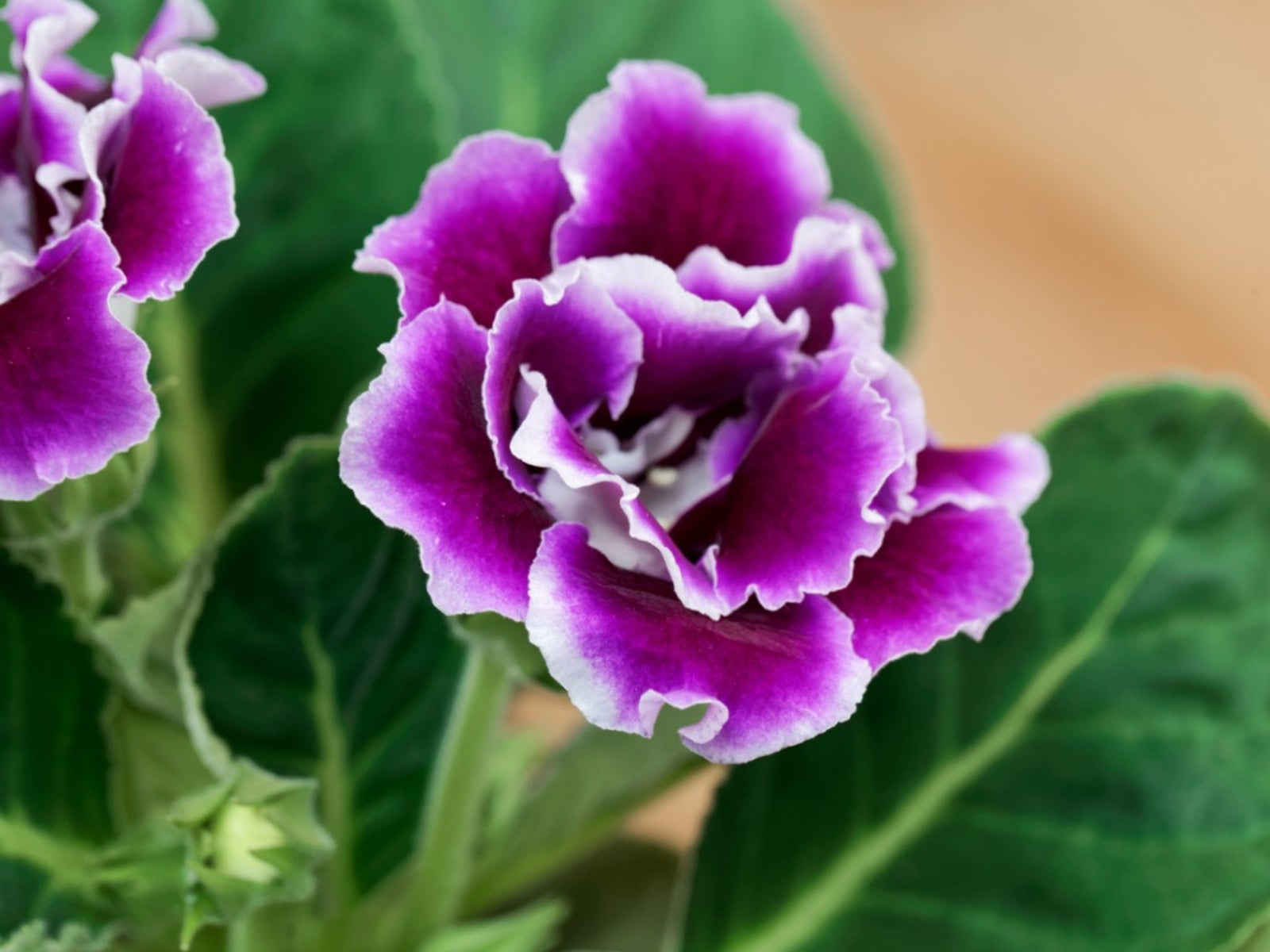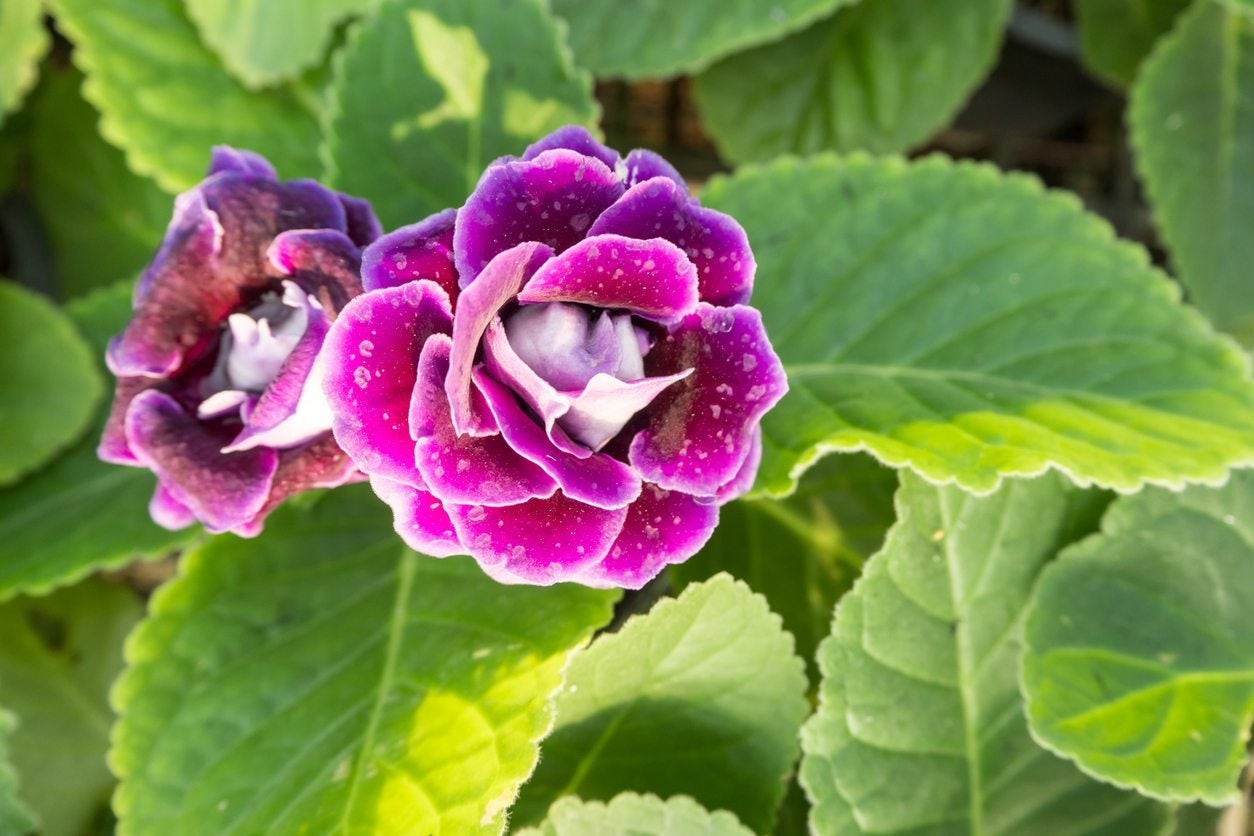Growing Gloxinia Houseplants: Learn About The Care Of Gloxinia Plant


A few years ago, a gloxinia flowering houseplant (Sinningia speciosa) was considered a perennial; the plants would bloom and then die back. After a period of dormancy, the plant would regrow, delighting its owner with a fresh flush of big, velvety flowers.
Today's gloxinias are hybrids bred to quickly produce a large number of blossoms. These gloxinias produce an outstanding display for about two months, but once the flowers fade, the plant rarely comes back because it invests all its energy into flowers rather than sturdy roots.
Therefore, these plants are best grown as annuals, and since they are discarded after the bloom cycle, gloxinia flower care focuses on keeping the plant looking fresh while it is in bloom.
Care of Gloxinia Plant
Gloxinia flower care is not too difficult. Place gloxinias in a bright area, out of direct sunlight. A location near a sunny window just outside the reach of the sun's rays is ideal. Growing gloxinia houseplants thrive in average room temperatures of between 60 and 75 degrees F. (16-24 C.).
Water gloxinias often enough to keep the soil moist. The leaves develop brown spots if they get wet, so apply the water directly to the soil under the leaves. If allowed to dry out, gloxinias go dormant. Use a high-phosphorus liquid plant food every two weeks on your flowering gloxinia houseplant.
When growing gloxinia houseplants as annuals, they don't need repotting. If you pot up the plant in a decorative container or need to replace some of the soil because of accidental spillage, use an African violet potting soil.
How to Grow Gloxinia from Seeds
Gloxinias on display in the garden center are lovely and well worth the price, but frugal growers may want to try their hand at growing them from seeds. The roots are tender and the plant is not easy to transplant to a larger container when it is young, so start the seeds in a 4 to 6 inch (10-15 cm.) pot where it can grow to full size.
Gardening tips, videos, info and more delivered right to your inbox!
Sign up for the Gardening Know How newsletter today and receive a free copy of our e-book "How to Grow Delicious Tomatoes".
Fill the pot to about 1 1/2 inches (4 cm.) from the top with African violet potting soil. Sift an additional 1/2 inch (1 cm.) of soil through a screen into the top of the pot so that the tender roots won't have any difficulty pushing through the soil when the seeds germinate.
Moisten the soil and press the seeds gently onto the surface. Seeds need light to germinate, so don't bury them. Place the pot in a plastic bag and seal the top to keep the soil moist and the air humid.
The seeds will germinate in three or four days. At that time, open the top of the bag and remove it completely after a week. Mist the soil when the surface feels dry.

Jackie Carroll has written over 500 articles for Gardening Know How on a wide range of topics.
-
 8 Noteworthy Native Azaleas Every Gardener Should Know – And Grow!
8 Noteworthy Native Azaleas Every Gardener Should Know – And Grow!Native azaleas offer brilliant blooms in a range of colors and sizes. Here are a few favorites to get inspired and start working on a native shade garden!
-
 Growing Climbing Roses: How To Create Elegant Displays With Maximum Blooms
Growing Climbing Roses: How To Create Elegant Displays With Maximum BloomsMaster the art of growing stunning climbing roses with this essential guide to creating vibrant, fragrant walls and structures all summer long.
